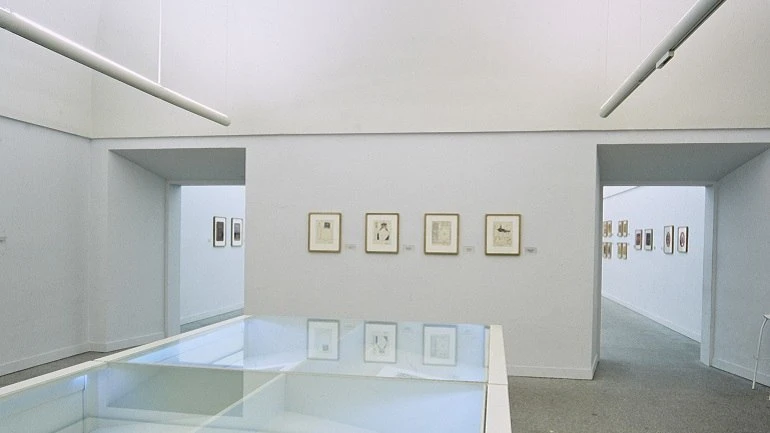Vicente Rojo. Obra sobre papel y Gran escenario primitivo

In this way, he becomes part of the Mexican scene with a language that is closer to the European avant-garde artists who transform geometry and lyrical abstraction: Paul Klee, Piet Mondrian, Ben Nicholson and even Giorgio Morandi. At that time, he acknowledges the texture of matter and chromatic variations (white, red and blue) of Jean Dubuffet and Jasper Johns, he includes diverse and unusual materials such as rubber, bits of wood, baskets and objects that he finds and presents Antoni Tapies’ grammar of symbols, as illustrated in Señal con cruz, Señal oscura and Señal con curvas from 1966.
With nearly a hundred pieces, this exhibition focuses on his work done on paper and covers projects produced between 1960 and 1997, among which include the polyptych Gran escenario primitivo (1996). The series makes up the topic based work unit and, within them develops formal variations, colour and slides that generate various solutions, the origin of one series is sometimes seen in a previous one.
By 1961-1962, Rojo begins space and constructive investigations and most of his series’ themes are related to the idea of a labyrinth and the universe, while many of them are linked with cities: Mexico (1979-1989), Barcelona (1978), Puerto Vallarta (1994). The result is landscapes and scenarios that use fundamentally minimum elements (diagonal line, circle, square) or elementary signs (like the letter T) that are repeated and vary in each unit of the series or piece, such as Recuerdo (1966) or Acorde (1978).
The notion of series evolves rapidly in his work towards the idea of variation (harmony), which is recognised not only in form, but also in the pictorial vocabulary used (points, broad strokes, a tone that is more or less mellow, patterns, zigzags , spots or plain ink, etc), as exemplified in Paseo de San Juan (1978). México bajo la lluvia (1981-1989), which he creates in the middle years of his career, is a challenge and an achievement of colour saturation. Thus the dense curtain of rain merges with the staggered lines of the Aztec temples and other references to the city. Its purpose is to "remove the main focus of attention which is presumed to exist in each painting, so that the whole picture is the centre" in the words of Paloma Esteban, curator of the exhibition.
Artists
Sala Tecla, L´Hospitalet de Llobregat (April - June, 1997)
Organised by
Museo Nacional Centro de Arte Reina Sofía
Image gallery

Itinerary
Museo Nacional Centro de Arte Reina Sofía, Madrid
28 January, 1997 - 30 March, 1997
Tecla Sala, L’Hospitalet de Llobregat
1 April, 1997 - 1 July, 1997